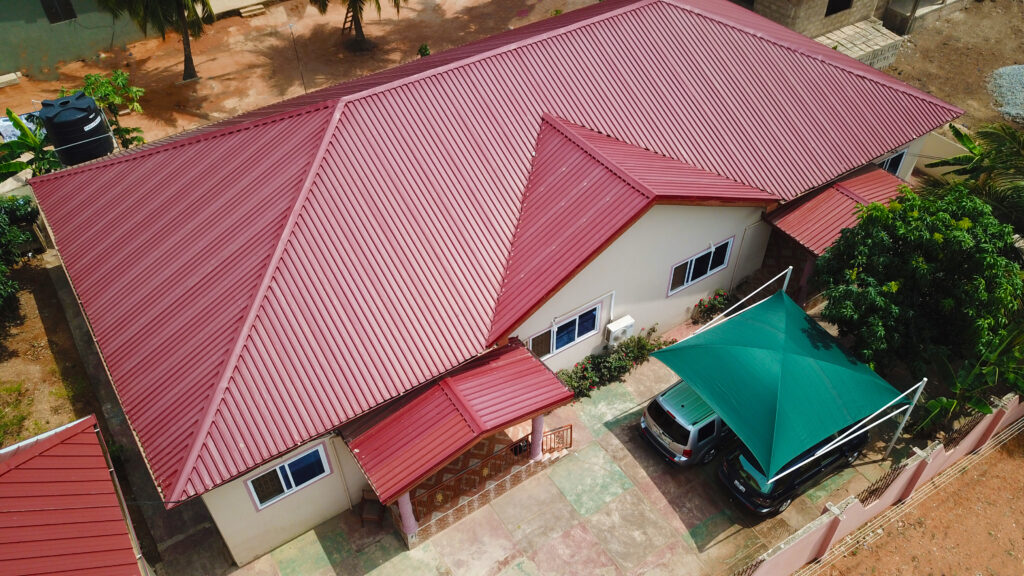Imagine standing in a neighborhood with houses stretching as far as the eye can see. The sun shines down on the rows of homes, each one with its own unique character. As you gaze up at the rooftops, you can’t help but wonder: what is the correct plural form of ‘roof’? Well, my friend, you’ve come to the right place. In this guide, we will explore the ins and outs of English grammar, providing you with a comprehensive understanding of how to navigate the sometimes tricky world of pluralizing ‘roof’. So, hold on tight, because we’re about to embark on a linguistic journey that will shed light on this fascinating topic.
Definition of ‘roof’ in English
The definition of ‘roof’ in English refers to the protective covering of a building or structure that provides shelter and protection from the elements. In other languages, the word for roof may have different variations but the concept remains the same. For example, in Spanish, the word for roof is ‘techo’, while in French it is ‘toit’. Regardless of the language, a roof serves the same purpose of shielding us from rain, sun, and other natural forces.
In architecture, there are various types of roofs that differ in shape, material, and design. Some common types include gable roofs, which have two slopes that meet at a ridge; hip roofs, which have slopes on all sides; flat roofs, which are horizontal and often used in modern architecture; and gambrel roofs, which have two slopes on each side, creating a barn-like appearance.
Understanding the definition of ‘roof’ in English and exploring the different types of roofs in architecture can give us a deeper appreciation for the structures that provide us with shelter and protection. Whether it’s a simple sloping roof or an intricate design, roofs play a vital role in the functionality and aesthetics of a building.
Singular and Plural Forms of ‘Roof
When discussing the singular and plural forms of ‘roof’, it is important to understand the grammatical rules that apply. In English, regular pluralization typically involves adding an “s” or “es” to the singular form of a noun. However, there are some common usage mistakes when it comes to the word ‘roof’:
Using “roofs” instead of “rooves”: While the regular plural form of ‘roof’ is ‘roofs’, some people mistakenly use ‘rooves’. However, ‘rooves’ is considered outdated and is not commonly used in modern English.
Confusing the plural of ‘roof: Some people incorrectly use ‘rooves’ as the plural of ‘roof’, thinking it follows the pattern of ‘hoof’ and ‘hooves’. However, ‘roof’ does not follow the same irregular pattern.
Adding unnecessary letters: Another common mistake is adding unnecessary letters to the plural form, such as ‘roofes’ or ‘roofies’. These variations are incorrect and should be avoided.
Using ‘roof’ as a plural noun: ‘Roof’ should not be used as a plural noun itself. It should be treated as a singular noun and pluralized accordingly.
Forgetting to pluralize: Some people simply forget to pluralize the word ‘roof’ and use it in its singular form, even when referring to multiple roofs.
Regular Pluralization Rules for ‘Roof
To form the regular plural of the noun ‘roof’, simply add an ‘s’ to the singular form. The correct plural form of ‘roof’ is ‘roofs’. This follows the regular pluralization rules for nouns ending in ‘f’ or ‘fe’. When a noun ends in these letters, we usually change the ‘f’ or ‘fe’ to ‘ves’ in the plural form. However, ‘roof’ is an exception to this rule. Instead of changing the ‘f’ to ‘ves’, we simply add an ‘s’ to the singular form.
Using the correct plural form is important in maintaining grammatical accuracy. By adding an ‘s’ to ‘roof’, we indicate that there is more than one roof. For example, “The houses in the neighborhood have different roofs.” In this sentence, ‘roofs’ is used to indicate that each house has its own distinct roof.
Remember to apply this regular pluralization rule when referring to more than one roof. By following this rule, you can ensure clear and effective communication in your writing and conversation.
Irregular Pluralization Rules for ‘Roof
As we move on to discussing irregular pluralization rules for ‘roof’, it’s important to note that not all nouns ending in ‘f’ or ‘fe’ follow the regular pluralization pattern. Some exceptions to the pluralization rules for ‘roof’ include:
Roofs: This is the most common and accepted plural form of ‘roof’.
Rooves: Although less common, ‘rooves’ is considered an acceptable alternative to ‘roofs’ by some English speakers.
Roofing: When referring to a collection or the material used for covering roofs, ‘roofing’ is used in both singular and plural form.
Rooftops: This term refers to the top surface of a roof or the outdoor space on top of a building.
Rooflines: This refers to the outline or shape of a roof, particularly when viewed from a certain angle.
These irregular plural forms and exceptions to the regular pluralization rules add complexity to the English language. It’s important to be aware of these variations when using the word ‘roof’ in different contexts.
Common Usage Mistakes With ‘Roof
You may be surprised to learn that one of the most common usage mistakes with ‘roof’ is related to its plural form. Many people mistakenly use ‘roofs’ as the plural of ‘roof’, when in fact the correct plural form is ‘rooves’. It’s important to be aware of this common mistake and use the correct form to ensure clear and accurate communication.
Common Mistakes With ‘Roof’
Many people mistakenly use the incorrect plural form of the word ‘roof’, causing confusion in their writing. Here are some common errors and misconceptions to avoid:
Using “roofs” instead of “rooves”: While “roofs” is the accepted plural form in standard English, some mistakenly use “rooves” as the plural. However, “rooves” is considered nonstandard and should be avoided.
Using “roofes” or “roofs” as a verb: Some mistakenly use “roofes” or “roofs” as a verb form, but the correct verb form is “roofed.”
Possessive form: When indicating ownership, use “roof’s” instead of “roofs’.” For example, “The roof’s color was faded.”
Irregular plural: “Roof” is a noun with an irregular plural form. The plural of “roof” is “roofs,” not “rooves” or “rooves.”
The correct plural form of the word ‘roof’ is ‘roofs’, and it is important to avoid using the nonstandard form ‘rooves’. Many people make the mistake of using ‘rooves’ as the plural of ‘roof’, but this is not grammatically correct. ‘Rooves’ is considered a common usage error when pluralizing ‘roof’. To ensure accuracy and clarity in your writing, always use the correct plural form, ‘roofs’. By avoiding this common mistake, you can maintain proper grammar and adhere to the rules of the English language. Remember, ‘roofs’ is the correct plural form of ‘roof’, so be mindful of this when writing or speaking.
Tips for Using the Correct Plural Form of ‘Roof
When it comes to using the correct plural form of ‘roof’, there are a few key points to keep in mind. First, the most common plural form is ‘roofs’, simply adding an ‘s’ to the end. However, it’s important to note that there are irregular plural forms as well, such as ‘rooves’. Understanding these variations can help you use the correct plural form in your writing.
Common Plural Forms
To use the correct plural form of ‘roof,’ simply add an -s to the end of the word. Here are some common plural forms of ‘roof’ that you may encounter:
Roofs: This is the most common plural form of ‘roof’ and is used to refer to multiple roofs in general.
Flat roofs: Refers to multiple roofs that are flat in shape, commonly found in modern architecture.
Pitched roofs: Refers to multiple roofs that have a steep slope, commonly found in traditional architecture.
Tiled roofs: Refers to multiple roofs that are covered with tiles, providing a durable and aesthetically pleasing option.
Metal roofs: Refers to multiple roofs that are made of metal, known for their longevity and durability.
Understanding these common plural forms can help you communicate effectively when discussing different types of roofs in architecture and how to maintain and repair them for longevity.
Irregular Plural Forms
Using the correct plural form of ‘roof’ can be tricky due to irregularities in the English language, but with a little practice, you’ll master it in no time. In English, most nouns form their plurals by adding an ‘s’ or ‘es’ at the end. However, there are some common irregular plural forms that do not follow this rule. ‘Roof’, unfortunately, falls under this category. The plural form of ‘roof’ is ‘roofs’, with an ‘s’ added at the end. There are no exceptions or alternative plural forms for ‘roof’. So, when referring to multiple roofs, always remember to use ‘roofs’ instead of ‘rooves’ or any other variation. Practice using the correct plural form, and soon it will become second nature to you.
Frequently Asked Questions
What Is the Origin of the Word ‘Roof’?
The word “roof” originated from the Old English word “hrof.” It has evolved over time to refer to the protective covering of a building. When discussing the different types of roofs found around the world, it is important to consider the diverse architectural styles and materials used. Throughout history, the design and construction of roofs have evolved to meet the needs of different climates, cultures, and building techniques.
Are There Any Alternative Words or Terms for ‘Roof’?
Are you curious about alternative terms for ‘roof’? Well, depending on the context or region, there are indeed some options. For instance, you may come across terms like ‘ceiling’, ‘top’, ‘canopy’, or ‘covering’ when referring to the roof. Additionally, when it comes to the plural form, ‘roofs’ is generally used in most English-speaking countries. However, in some dialects or regions, ‘rooves’ is also accepted.
Can the Plural Form of ‘Roof’ Vary Based on the Context or Region?
The plural form of ‘roof’ can indeed vary based on the context or region. In American English, the most common plural form is ‘roofs’. However, in British English, ‘rooves’ is sometimes used as an alternative. This slight difference in pluralization is just one of the many ways that English can vary depending on where it is spoken. So, when discussing the plural form of ‘roof’, it’s important to consider both the context and the regional variations.
Are There Any Exceptions to the Regular Pluralization Rules for ‘Roof’?
The plural of ‘roof’ can vary based on context or region. However, are there any exceptions to the regular pluralization rules for ‘roof’? Understanding the different meanings of the word ‘roof’ is crucial in determining its plural form. Additionally, it’s important to note that the plural form of ‘roof’ is generally used in informal writing and speech. In formal writing, it is advisable to use alternative phrases to avoid confusion or ambiguity.
How Do You Pronounce the Plural Form of ‘Roof’?
When it comes to the plural form of “roof,” you might be wondering how to pronounce it. Well, the good news is that the plural of “roof” is pronounced the same way as the singular form. There is no difference in spelling or pronunciation. So, whether you are talking about one roof or several roofs, you can say it the same way. Isn’t that convenient?
Conclusion
In conclusion, understanding the plural form of ‘roof’ is an important aspect of English grammar. By following the regular pluralization rules, we can easily form the plural form of ‘roof’ by adding an ‘s’ at the end. However, it’s crucial to be aware of the irregular pluralization rules and common usage mistakes to avoid any grammatical errors. By using the correct plural form of ‘roof,’ we can communicate effectively and accurately in English.
Discover more from Ghana Scoop
Subscribe to get the latest posts sent to your email.





